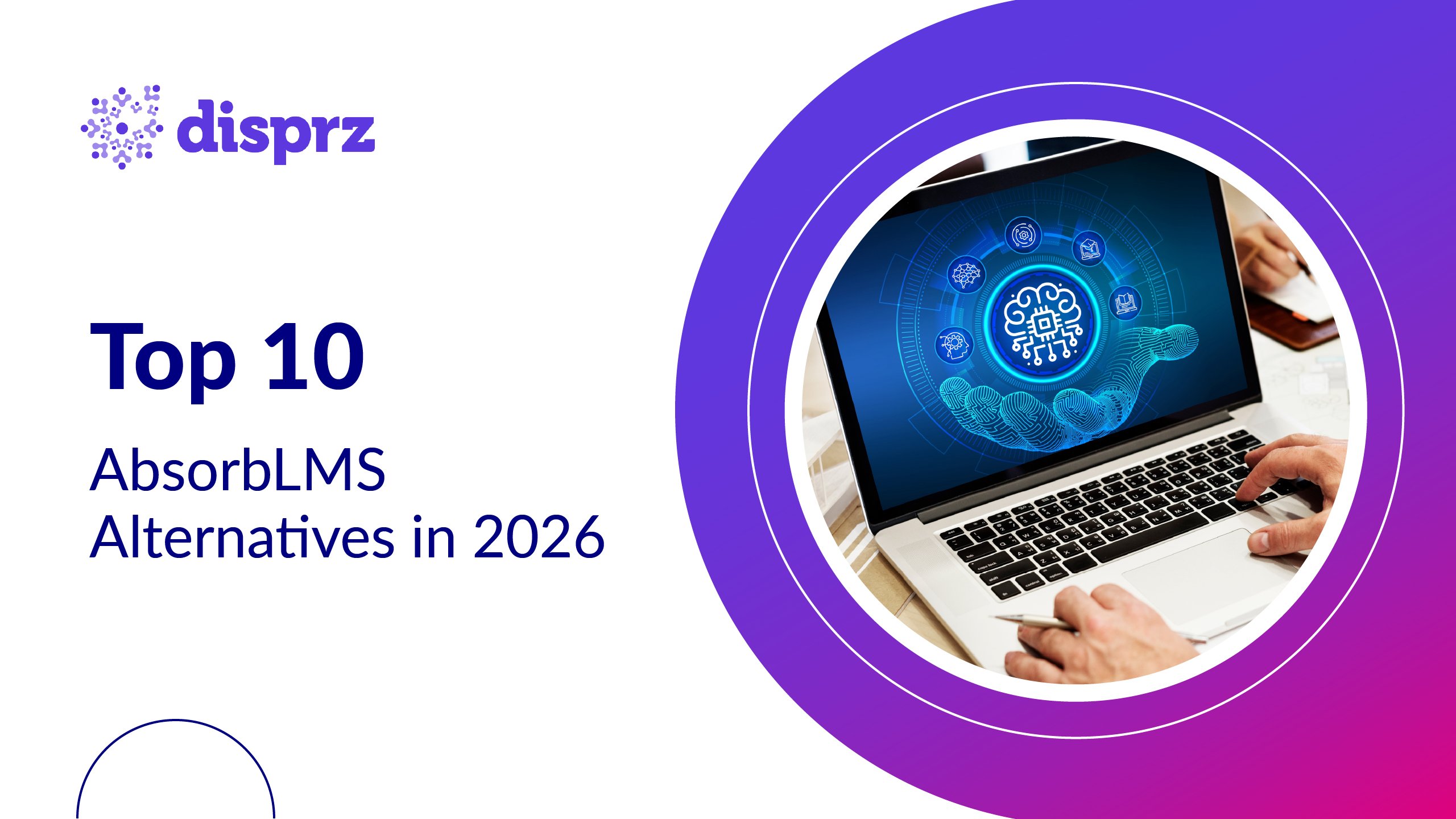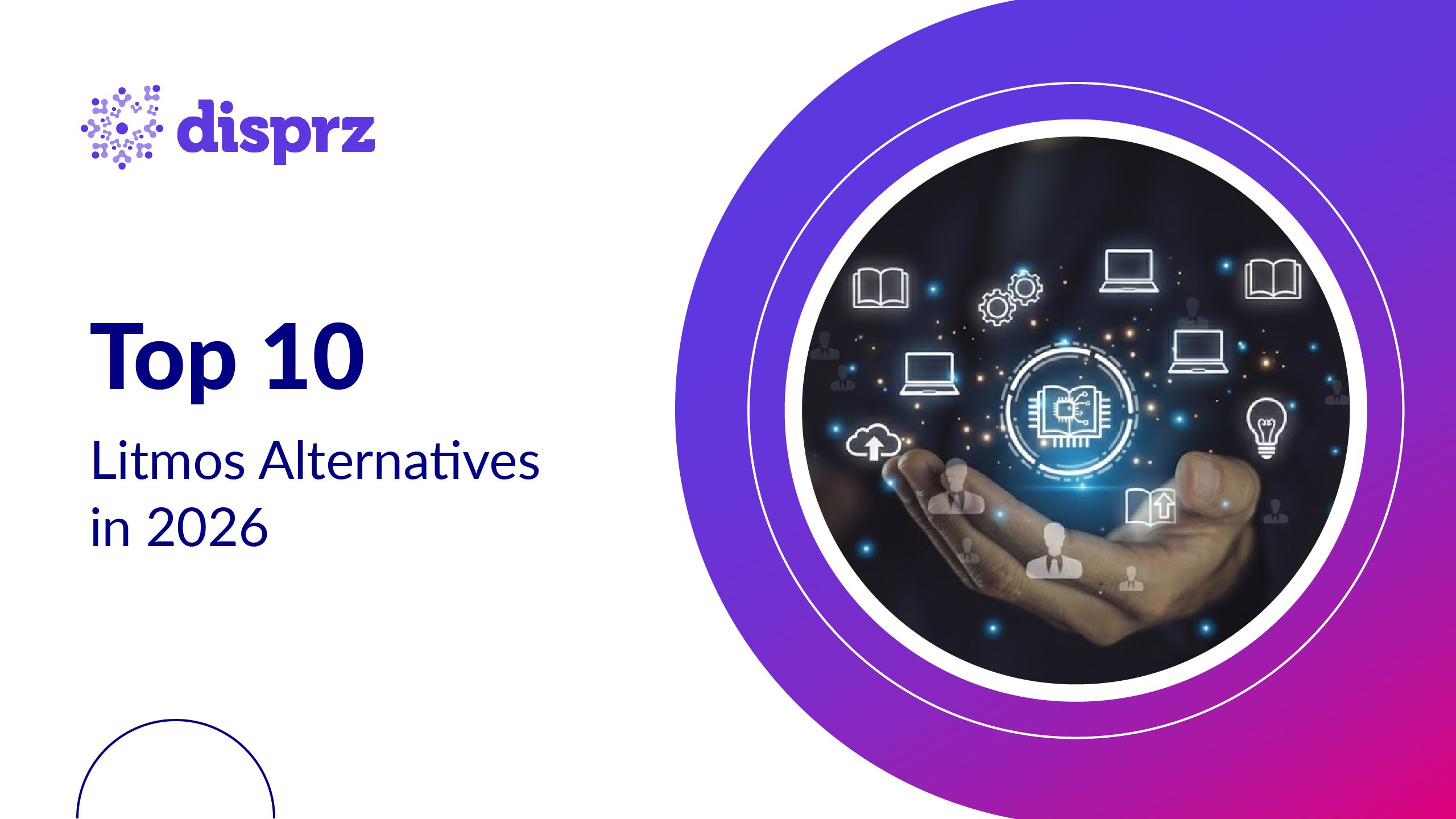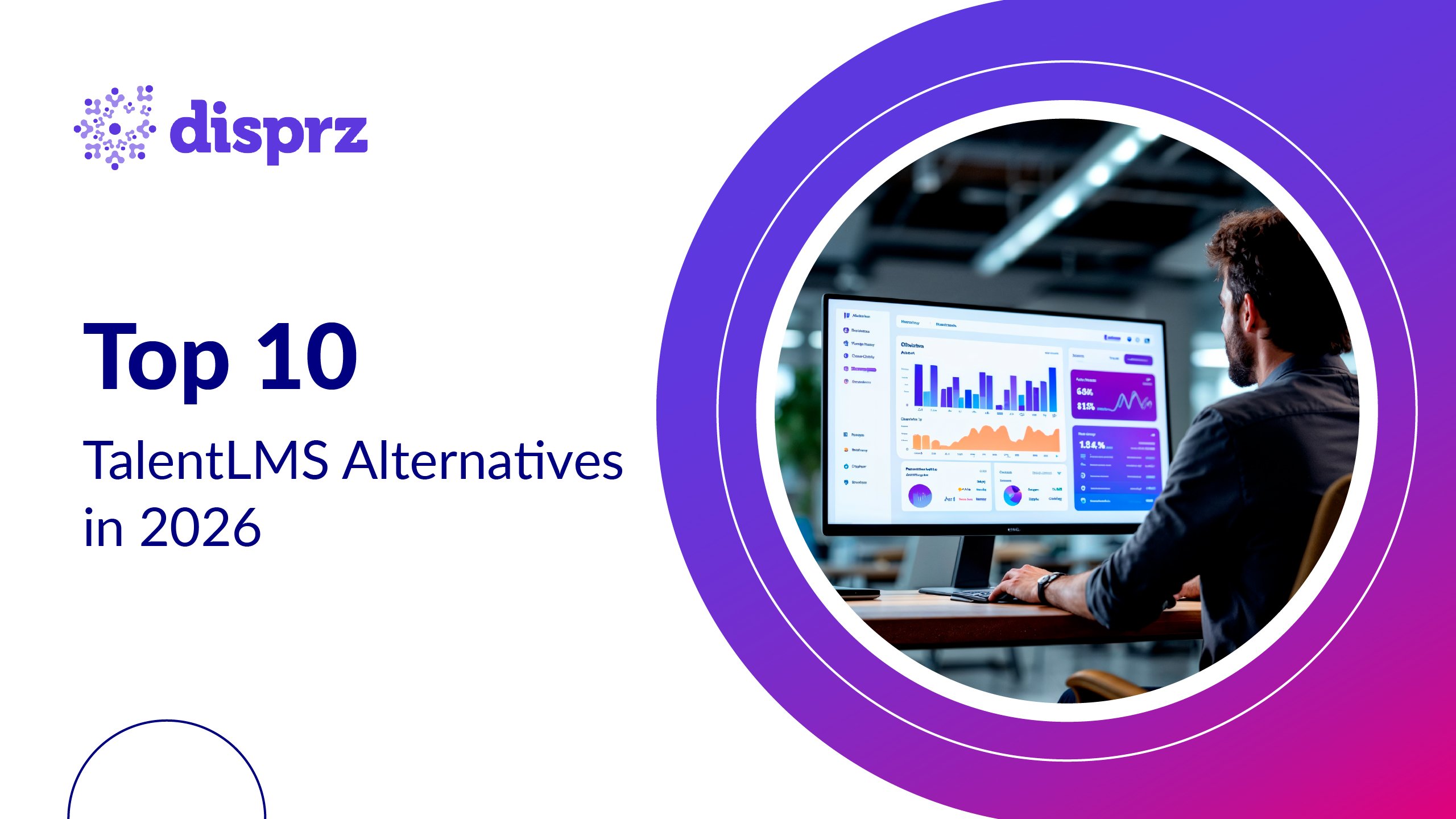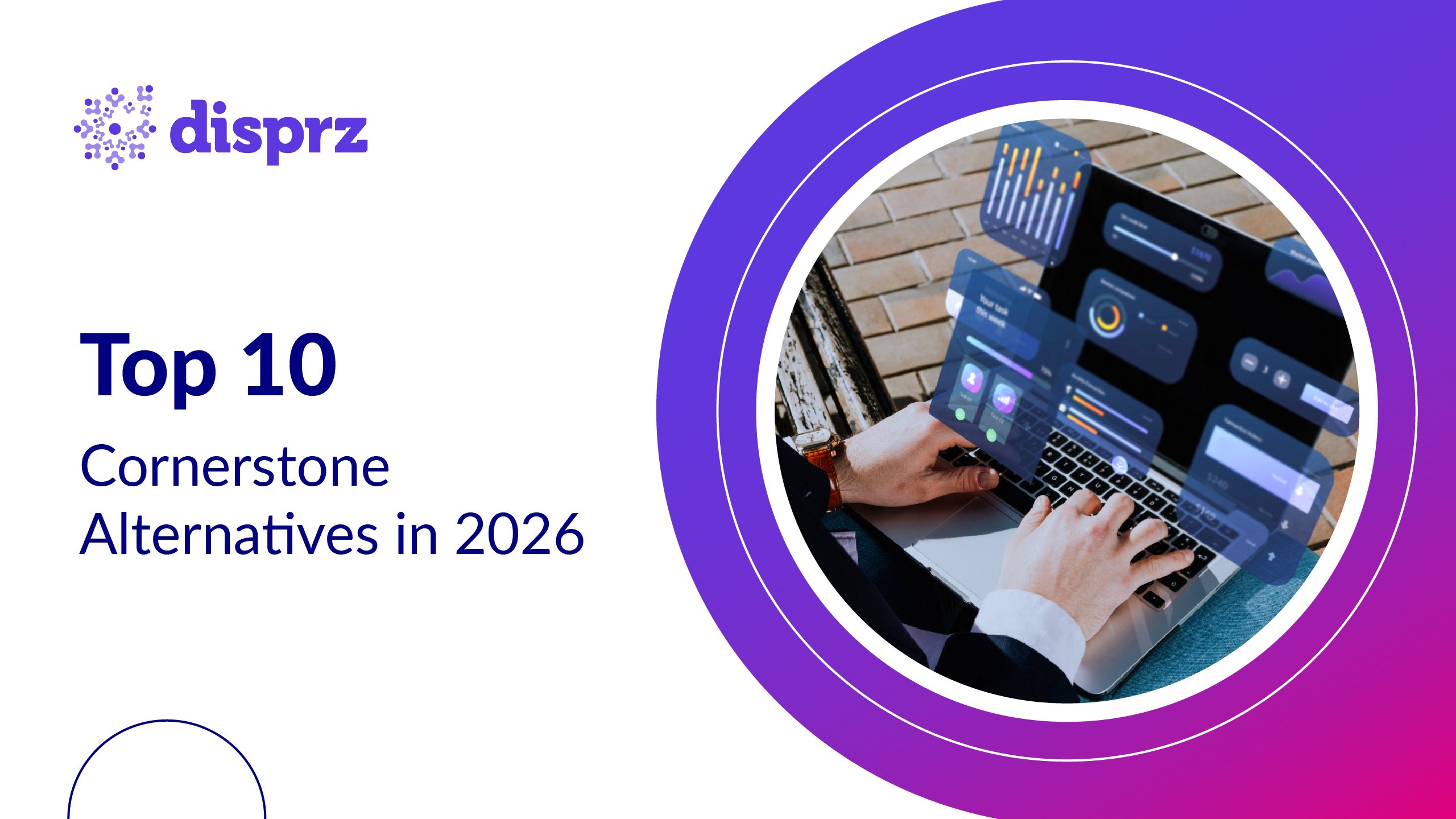In a rapidly evolving business environment, traditional performance reviews and once-a-year evaluations are no longer enough. The modern workforce demands more than static feedback loops and vague annual goals; it craves clarity, continuous growth, and a culture that ties personal development to business impact. That’s where a performance-first culture becomes a game-changer.
As we move toward 2025, L&D leaders are rethinking how they build, measure, and scale performance across their organizations. They are shifting focus from isolated metrics to continuous performance management, integrating real-time feedback training, skill development, and goal alignment strategies such as OKRs (Objectives and Key Results) into day-to-day operations.
Here we explore how enterprises can embed a performance-first mindset by combining performance management training, feedback management training, and capability building; all powered by technology such as LMS platforms and skill intelligence tools. The goal? To drive not just performance, but engagement, agility, and long-term employee success.
Whether you're an HR strategist, people manager, or L&D leader, this guide will give you actionable insights to move beyond outdated review cycles and adopt training-led systems that cultivate performance management skills, enable real-time course correction, and sustain momentum; no matter where your teams are located. Let’s dive in and explore why now is the moment to put performance at the heart of your culture.
Why Performance Management Needs a Cultural Reset
The old model of performance management; centered on annual appraisals, static KPIs, and top-down feedback; no longer meets the needs of today’s fast-moving, distributed workforce. In a hybrid world where priorities shift quickly and agility determines success, organizations need more than retrospective reviews. They need a system that enables continuous performance management and evolves with business goals.
The Disconnect Between Traditional Systems and Modern Work
Employees today want clarity, autonomy, and actionable feedback. But outdated systems often create anxiety rather than alignment. A one-size-fits-all approach fails to accommodate diverse workstyles, roles, and developmental needs. Moreover, performance reviews based on memory rather than data are prone to bias and miss the mark on real growth opportunities.
Why Annual Reviews Aren’t Enough
Annual or even biannual performance reviews create long feedback gaps, which can result in misaligned expectations, disengagement, and delayed course correction. In contrast, frequent check-ins supported by feedback training and feedback management training help employees understand how their efforts contribute to broader business outcomes.
The Link Between Learning and Performance
There’s an urgent need to tie performance management to skill development. Many organizations track goals without enabling the capabilities required to achieve them. By embedding performance management training into employee development programs, companies can ensure that growth is not only measured; but made possible. That’s where integrated platforms such as LMSs and skill intelligence tools can help connect the dots between objectives, learning interventions, and outcomes.
A Cultural Opportunity, Not Just a Process Fix
Resetting performance management is not about replacing one process with another. It’s about fostering a culture where performance is a daily conversation, not a yearly verdict. Where feedback is proactive. Where managers are equipped with the right performance management skills. And where employees feel empowered to take charge of their growth. As organizations prepare for 2025, a cultural reset in performance management isn't just beneficial; it’s essential.
What is a Performance-First Culture?
A performance-first culture is one where performance isn’t just reviewed; it’s embedded in every interaction, goal, and development plan across the organization. It aligns individual growth with business outcomes, fostering a shared responsibility between employees and managers to continuously improve, adapt, and deliver impact.
Unlike traditional performance systems, which operate in silos and rely on end-of-year evaluations, a performance-first culture is built on the principles of transparency, real-time feedback, and capability building. It prioritizes outcomes over processes and learning over judgment.
Core Characteristics of a Performance-First Culture
Continuous Conversations Over Annual Reviews: Frequent check-ins, coaching moments, and real-time recognition replace the once-a-year performance review cycle. This ensures alignment stays fresh and course corrections happen early.
Feedback as a Skill, Not a Task: Employees and managers are trained through feedback training and feedback management training to give and receive feedback constructively; fueling personal development and team agility.
Goal Alignment Through OKRs: Clear, measurable OKRs connect individual roles to organizational priorities; offering clarity, focus, and motivation.
Integrated Learning and Development: Performance isn’t just assessed; it’s enabled. With the help of LMS platforms, learning is embedded into work, ensuring skill gaps are addressed in real-time.
Data-Driven Insights with Skill Intelligence: Leaders gain visibility into performance trends, skill gaps, and development needs across teams; enabling smarter decisions and more targeted interventions.
The Role of Managers in a Performance-First Culture
In a performance-first environment, managers act as coaches, not just evaluators. They are equipped with performance management skills to nurture team strengths, address challenges early, and build a culture of trust and high engagement. For this, managers must be supported with structured performance training, access to real-time data, and tools that help them create meaningful growth plans.
Ultimately, a performance-first culture ensures that performance management isn’t an isolated HR activity; but a continuous, collaborative effort that fuels both employee and organizational success.
The New Concept of Performance Management in 2025
As we approach 2025, the concept of performance management is undergoing a profound transformation. No longer confined to ratings and reviews, it is evolving into a dynamic ecosystem that combines real-time feedback, continuous learning, and data-driven decision-making to drive business performance.
Modern performance management is fluid, inclusive, and future-ready; built for a workforce that values purpose, progression, and personalization. It isn’t just about tracking productivity; it’s about empowering people to reach their full potential.
From Compliance to Growth
Earlier, performance management was often a compliance task; something done to check a box at the end of the year. In 2025, it becomes a growth engine, enabling individuals and teams to course-correct in real time, build critical skills, and contribute meaningfully to business outcomes. With tools such as LMS platforms, skill intelligence engines, and automated feedback management training, the system now serves as a continuous feedback loop between learning and performance; ensuring employees are always developing in the direction of strategic goals.
Personalized and Role-Based
The modern approach recognizes that no two employees are the same. Performance training is now hyper-personalized, delivered based on job roles, current skills, and future aspirations. Whether it’s a first-time manager or a senior leader, learning pathways are tailored to accelerate role-specific capabilities. Using AI and analytics, companies are mapping out performance journeys that not only evaluate but enable progress. Employees are no longer passive recipients; they co-own their development, aided by smart nudges and insights.
Integrated with OKRs and Business Strategy
Gone are the days of vague objectives and static KPIs. In 2025, OKRs are tightly integrated with performance systems, providing clarity, focus, and alignment. Employees know exactly how their daily work ladders up to team and organizational goals. Performance conversations are anchored in these OKRs, and outcomes are measured not just by “what” was achieved, but “how” it was done; tying in values, collaboration, and upskilling efforts.
Tech-Enabled, Human-Led
Technology is a key enabler, but the human element remains central. Performance management training equips managers to hold meaningful conversations, build trust, and motivate teams; while tech takes care of tracking, nudging, and surfacing insights. Skill intelligence platforms ensure that data is not just collected but converted into actionable insights; revealing hidden talent, potential skill gaps, and development opportunities.
7 Key Components of Modern Performance Management Training
Building a performance-first culture starts with equipping managers and employees with the right knowledge, tools, and frameworks. Traditional training focused solely on review mechanics is no longer sufficient. Modern performance management training blends technical systems knowledge with leadership, communication, and coaching skills; delivered continuously, not just at onboarding.
Here are the essential components that define high-impact performance training in 2025:
1) Understanding the New Concept of Performance Management
Training begins by reframing outdated mindsets. Employees and managers must first understand what performance management truly means today; a continuous, collaborative process tied to business outcomes, not just ratings.
2) Mastering Goal Setting with OKRs
Effective training programs teach how to set and cascade OKRs. Participants learn to set measurable, time-bound goals that link individual contributions to team and organizational strategy.
3) Feedback Management Training
Giving and receiving feedback is a core skill; not a natural talent. Feedback training teaches how to provide timely, constructive, and psychologically safe feedback, while also encouraging a growth mindset across teams.
4) Coaching and Development Conversations
Managers must move from evaluators to enablers. Through simulations, roleplays, and coaching templates, performance training should help managers build confidence in guiding career conversations, spotting development opportunities, and supporting employee growth.
5) Using LMS and Performance Tools Effectively
Modern LMS platforms such as Disprz don’t just deliver content; they drive measurable performance outcomes. Training must include platform-specific sessions on using tools to track skill progress, run 1:1s, and capture feedback seamlessly.
6) Leveraging Skill Intelligence
Employees and managers should be trained on how to read and act on insights from skill intelligence platforms. This includes interpreting dashboards, identifying gaps, and building action plans based on data, not guesswork.
7) Building Performance Rituals and Cadence
Training should establish a cadence for performance rituals (weekly check-ins, monthly reviews, quarterly planning) so that performance becomes a habit, not a one-off event.
Top 7 Skills Every Manager Needs to Lead High Performance
In a performance-first culture, managers are no longer just supervisors; they're coaches, facilitators, and growth enablers. But to lead high-performing teams, they must master a blend of people skills and performance tools.
Here's a look at the seven critical performance management skills every manager must develop in 2025:
1) Goal Setting & OKR Alignment
Effective managers know how to break down business objectives into meaningful, actionable OKRs. They help team members define stretch goals that are ambitious yet achievable, and continuously revisit them to maintain alignment.
2) Constructive Feedback Delivery
Managers must become fluent in feedback training techniques; offering praise, course correction, and growth advice in ways that build trust. Mastery of feedback management training ensures communication is clear, timely, and developmental.
3) Coaching for Growth
Beyond correcting performance issues, managers must learn to coach; asking powerful questions, guiding reflection, and creating development plans. Coaching becomes the bridge between feedback and capability building.
4) Empathetic Listening
A high-performance manager listens deeply; not just for updates, but for signals of disengagement, frustration, or unmet potential. Training in active listening enables better 1:1s, conflict resolution, and psychological safety.
5) Data-Driven Decision Making
With skill intelligence platforms and performance analytics, managers have access to a wealth of insights. They need training to interpret dashboards, identify trends, and make informed talent decisions based on real-time data.
6) Using Performance Tools and LMS Platforms
Knowing how to use tools such as Disprz LMS is key to driving outcomes. From assigning training modules to tracking skill progress and scheduling feedback loops, tech fluency is a core skill in 2025.
7) Driving Engagement and Accountability
Finally, great managers cultivate a sense of ownership in their teams. They encourage self-driven learning, hold employees accountable to their goals, and celebrate progress; fueling motivation and long-term performance.
When equipped with these seven performance management skills, managers become the frontline drivers of culture, employee engagement, and business growth.
Embedding Capability Building into Performance Cycles
One of the most powerful shifts in 2025 performance strategy is the integration of capability building directly into performance cycles. It’s no longer enough to evaluate performance; organizations must actively develop it. By aligning learning with performance goals, companies ensure that feedback is actionable, skills are built continuously, and growth becomes inevitable.
Why Learning and Performance Must Converge
Most performance gaps aren’t due to lack of effort; they’re due to lack of capability. When feedback identifies a gap, the next step should be immediate access to resources that address it. This is where performance training, LMS platforms, and skill intelligence systems play a vital role. Rather than separating learning from day-to-day work, progressive organizations embed microlearning, on-the-job tasks, and coaching into the performance rhythm. The result? Learning that’s relevant, timely, and measurable.
Linking Skill Development to Performance Reviews
A performance-first culture shifts the focus from “What did you achieve?” to “What did you learn, and how will you grow from here?” Managers are trained to use performance check-ins as moments to recommend specific learning pathways; based on role, past performance, and future potential.
For example:
-
A sales manager receiving feedback on negotiation skills can be assigned a role-based course via the LMS.
-
A team lead with a new project mandate can access a curated OKR-setting module to sharpen goal alignment.
This turns reviews into actionable learning moments, not just reporting exercises.
Using Skill Intelligence to Personalize Capability Building
With advanced skill intelligence, organizations can map current skill levels, identify gaps at an individual or team level, and offer hyper-personalized development journeys. This data informs not only who needs training; but what kind and when.
The result is a performance cycle where:
-
Feedback flows into training.
-
Training leads to improved performance.
-
Improved performance feeds into business outcomes.
This closed-loop approach ensures that performance conversations aren’t isolated; they’re part of an ongoing, data-informed development strategy.
Designing a Scalable Performance Culture for Distributed Teams
In today’s hybrid and global work environment, scaling a performance-first culture across geographies, time zones, and diverse roles requires intention, consistency, and the right technology. Without in-person cues or watercooler check-ins, performance conversations and feedback risk becoming inconsistent; or disappearing altogether.
The challenge isn’t just setting up processes; it’s ensuring they are embedded, trackable, and inclusive across distributed teams.
1) Standardize, Then Personalize
Start by creating a standard performance framework; a common language for goal-setting, feedback, and evaluation. Then, personalize based on function, region, or role using tools such as LMS platforms and skill intelligence engines. This ensures everyone operates under the same principles, while still receiving relevant, contextual support.
For example:
-
A remote design team can receive design-specific OKRs and feedback rubrics.
-
A frontline sales team in another region can be trained using a mobile-friendly LMS module tailored to their challenges.
2) Leverage Technology for Always-On Performance
To scale effectively, use performance management tools that support asynchronous communication, documentation, and goal tracking. Disprz’s integrated platform, for instance, allows 24/7 access to learning and performance content, automated nudges for check-ins, and real-time skill gap visibility. These features help managers and employees stay connected to performance goals, no matter where they’re working.
3) Enable Managers to Lead From Anywhere
Distributed cultures only thrive when managers are empowered to lead remotely. Equip them with feedback management training for virtual conversations, templates for digital 1:1s and coaching, and dashboards to track progress without micromanaging. This ensures that performance culture is not dependent on physical presence, but on mindset and systems.
4) Foster Peer Feedback and Recognition
Encourage peer-to-peer feedback loops that don’t rely solely on manager input. Tools that support public praise, private suggestions, or crowdsourced evaluations add richness to distributed feedback ecosystems; and increase engagement. When designed well, a scalable performance culture doesn't dilute quality; it amplifies it. With the right tools and practices, you can ensure every team member, regardless of location, is aligned, supported, and motivated to grow.
Final Thoughts: Your 2025 Roadmap to Performance-First Growth
2025 isn’t just another year on the calendar; it’s a tipping point for how organizations approach performance. As workforce models evolve and employee expectations rise, performance management can no longer be a reactive, once-a-year ritual. It must become a proactive, continuous, and personalized system that’s tightly linked to business outcomes, skills, and engagement.
To build a performance-first culture, L&D leaders and managers must align strategy, training, and technology around three core pillars:
Train for Performance, Not Just Compliance
Equip your managers with ongoing performance management training and feedback training, not just process checklists. Develop coaching capabilities and empower them to act as enablers of growth, not just evaluators.
Integrate Skill Building into Performance Cycles
Use tools such as LMS platforms and skill intelligence to ensure every feedback loop or review leads to learning. Make skill development the natural next step after any performance conversation.
Enable Performance Anywhere
Design systems and rituals that scale across distributed teams; backed by tech, but led by people. Use platforms that support OKRs, continuous feedback, and manager-employee check-ins regardless of location or time zone.
Your Next Steps:
-
Audit your current performance processes: Are they continuous? Are they personalized? Are they tied to skills?
-
Launch a manager capability program focused on feedback, goal-setting, and coaching.
-
Choose a platform that integrates learning, performance, and skill intelligence into a single experience.
Performance is not just about output; it's about enabling potential at scale. With the right systems and mindset, your organization can build a culture where high performance isn’t an exception, but the expectation.
Ready to turn performance into your competitive advantage? Let Disprz help you lead the way.








